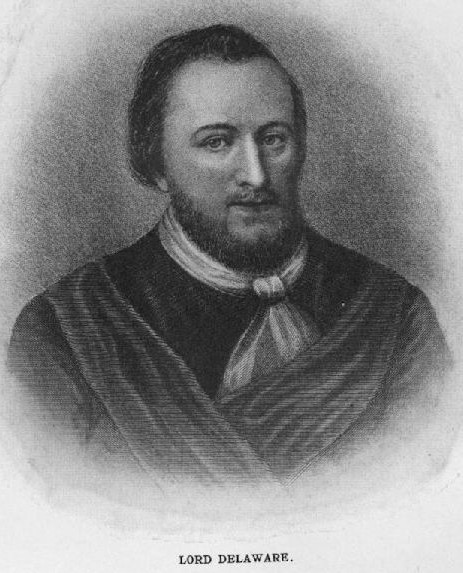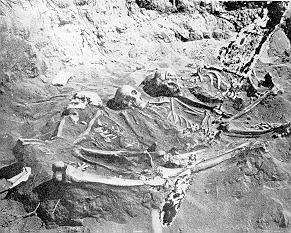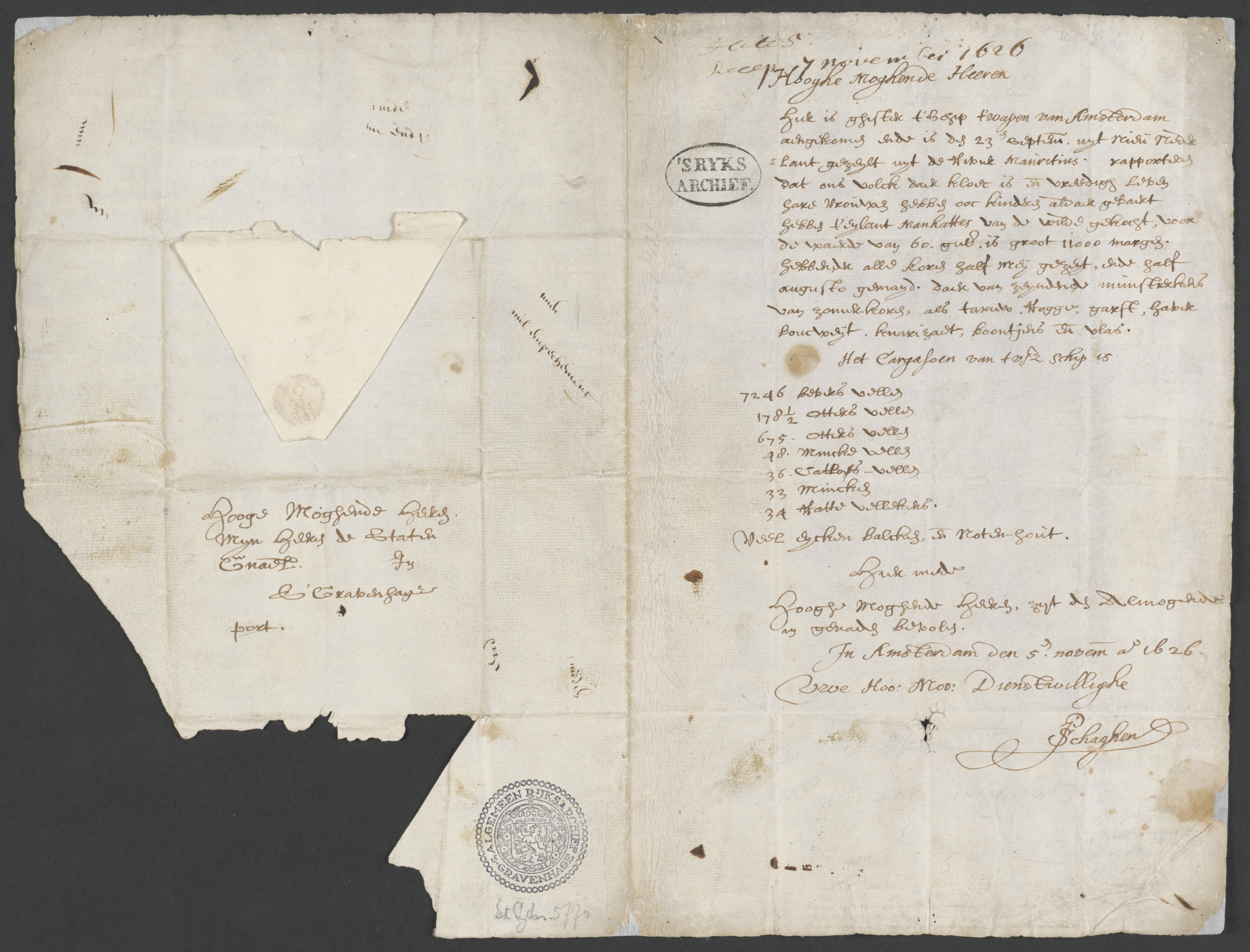|
Hans Månsson
Hans Månsson (1612–1691) was a Swedish soldier and a convicted criminal who was sent to New Sweden along the lower reaches of the Delaware River in what is now the United States in 1641. After serving six years on a tobacco plantation, he was freed and became a respected leader in Dutch New Netherland, serving as a spokesman for the settlers, and as commanding officer of the militia at Wicaco. He purchased land and was one of the first European settlers in what is now New Jersey. Birth and early life Hans Månsson was born in Skara Municipality, Sweden, son of Måns Persson (1595-1637) and Brita Lillebielke (1595-1612). He served as a cavalryman in the Västgöta Regiment during the Thirty Years' War, 1638–1640. Criminal conviction On his return from the war in 1640, Månsson camped with other troops near the Royal Garden at the Varnhem Abbey which was owned by the Swedish Royal family. Governor Carl Siggesson Rosendufva gave the men permission to pick apples from the ... [...More Info...] [...Related Items...] OR: [Wikipedia] [Google] [Baidu] |
Skara Municipality
Skara Municipality () is a municipality in Västra Götaland County in western Sweden. Its seat is located in the city of Skara. The area of the municipality consists of 16 original local government entities. The municipal reform of 1952 grouped them into four new entities. In 1971 the ''City of Skara'' was amalgamated with the rural municipalities to form the present unit. Localities * Ardala, pop. 745 * Axvall, pop 1 164 * Eggby, pop. 237 * Skara (seat), pop. 11 437 * Varnhem, pop. 662 Varnhem is renowned for its medieval monastery. Demographics This is a demographic table based on Skara Municipality's electoral districts in the 2022 Swedish general election sourced from SVT's election platform, in turn taken from SCB official statistics. In total there were 18,708 residents, including 14,210 Swedish citizens of voting age. 46.4% voted for the left coalition and 52.4% for the right coalition. Indicators are in percentage points except population totals and income. See a ... [...More Info...] [...Related Items...] OR: [Wikipedia] [Google] [Baidu] |
Olof Persson Stille
Olof Persson Stille (1610–1684) was a pioneer settler of New Sweden, a colony along the lower reaches of the Delaware River in North America claimed by Sweden from 1638 to 1655. Stille served as the first chief justice of the Upland Court, the governing body of the New Sweden colony following Dutch West India Company annexation from Swedish colonial rule. Background Olof Persson Stille was born in Sweden on the island of SoIö in Roslagen, northeast of Stockholm, the son of Per Stille, supervisor of the Penningby estate in Länna parish, Norrtälje Municipality in Uppland, north of Stockholm. In 1627 when Per Stille retired, he was granted land by the owners of Penningby on a nearby island called Humblö in the Stockholm archipelago. This was where Olof Stille married and began his family. New Sweden In May 1641, the ''Charitas'' departed for New Sweden. The passengers included Olof Stille, a millwright, with his wife, a daughter, Ella, and son Anders. Also on board were Olof' ... [...More Info...] [...Related Items...] OR: [Wikipedia] [Google] [Baidu] |
Schuylkill River
The Schuylkill River ( , ) is a river in eastern Pennsylvania. It flows for U.S. Geological Survey. National Hydrography Dataset high-resolution flowline dataThe National Map(). accessed April 1, 2011. from Pottsville, Pennsylvania, Pottsville southeast to Philadelphia, the nation's sixth-largest city, where it joins the Delaware River as one of its largest tributaries. The river's Drainage basin, watershed of about lies entirely within the state of Pennsylvania, stretching from the Ridge-and-Valley Appalachians through the Piedmont (United States), Piedmont to the Atlantic Plain. Historically the Schuylkill lay within the territory of the Susquehannock and Lenape peoples. In 1682, William Penn founded the city of Philadelphia between the Schuylkill and Delaware rivers on lands purchased from the Lenape Indian tribe. The Schuylkill River became key in the development of the city and the surrounding region. While long used for transport, the river was made fully navigable via ... [...More Info...] [...Related Items...] OR: [Wikipedia] [Google] [Baidu] |
Kingsessing, Philadelphia
Kingsessing is a neighborhood in the Southwest section of Philadelphia, Pennsylvania, United States. On the west side of the Schuylkill River, it is next to the neighborhoods of Cedar Park and Elmwood Park, as well as the borough of Yeadon in Delaware County. It is roughly bounded by the SEPTA Regional Rail Media/Wawa Line to the northeast, Baltimore Avenue to the northwest, Cobbs Creek and 60th Street to the southwest, and Woodland Avenue to the southeast. History The name Kingsessing, also spelled Chinsessing, comes from a Delaware word meaning "a place where there is a meadow". The historic Lenape, or Delaware as the English called them, had a village of the same name that roughly occupied the same site as where the current neighborhood was later developed. When the township was organized to encompass where the Lenape and a later Swedish village stood, it also was named as Kingsessing. Mount Moriah Cemetery was founded next to Cobbs Creek in 1855. The neighborhood nea ... [...More Info...] [...Related Items...] OR: [Wikipedia] [Google] [Baidu] |
Fort Casimir
Fort Casimir or Fort Trinity was a Dutch fort in the seventeenth-century colony of New Netherland. It was located on a no-longer existing barrier island at the end of Chestnut Street in what is now New Castle, Delaware. Background The Dutch called the Delaware River the ''Zuyd Rivier'', or South River, and considered the lands along it banks and those of its bay to be the southern flank of its colony of New Netherland. In 1638, the Delaware Valley began to be settled by Swedes, Finns, Dutch, and Walloons and became the colony of New Sweden, though this was not officially recognized by the Dutch Empire. Sovereignty The fort changed hands several times. Shortly after his arrival to take up his position as up as Director-General of New Netherland in 1647, Peter Stuyvesant, attempted to re-assert control of the region and its lucrative trade. In his initial attempt at control, he effected the construction of Fort Beversreede near the terminus of the Great Minquas Path, at th ... [...More Info...] [...Related Items...] OR: [Wikipedia] [Google] [Baidu] |
Delaware River
The Delaware River is a major river in the Mid-Atlantic region of the United States and is the longest free-flowing (undammed) river in the Eastern United States. From the meeting of its branches in Hancock, New York, the river flows for along the borders of New York, Pennsylvania, New Jersey, and Delaware, before emptying into Delaware Bay. The river has been recognized by the National Wildlife Federation as one of the country's Great Waters and has been called the "Lifeblood of the Northeast" by American Rivers. Its watershed drains an area of and provides drinking water for 17 million people, including half of New York City via the Delaware Aqueduct. The Delaware River has two branches that rise in the Catskill Mountains of New York: the West Branch at Mount Jefferson in Jefferson, Schoharie County, and the East Branch at Grand Gorge, Delaware County. The branches merge to form the main Delaware River at Hancock, New York. Flowing south, the river re ... [...More Info...] [...Related Items...] OR: [Wikipedia] [Google] [Baidu] |
Peter Stuyvesant
Peter Stuyvesant ( – August 1672)Mooney, James E. "Stuyvesant, Peter" in p.1256 was a Dutch colonial administrator who served as the Directors of New Netherland, director-general of New Netherland from 1647 to 1664, when the colony was provisionally ceded to the Kingdom of England. He was a major figure in the history of New York City and his name has been given to various landmarks and points of interest throughout the city (e.g. Stuyvesant High School, Stuyvesant Town–Peter Cooper Village, Stuyvesant Town, Bedford–Stuyvesant, Brooklyn, Bedford–Stuyvesant neighborhood, etc.). Stuyvesant's accomplishments as director-general of New Netherland included a great expansion for the settlement of New Amsterdam beyond the southern tip of Manhattan. Among the projects built by Stuyvesant's administration were the protective wall on Wall Street, the canal that became Broad Street (Manhattan), Broad Street, and Broadway (Manhattan), Broadway. Stuyvesant, himself a member of the ... [...More Info...] [...Related Items...] OR: [Wikipedia] [Google] [Baidu] |
Staten Island
Staten Island ( ) is the southernmost of the boroughs of New York City, five boroughs of New York City, coextensive with Richmond County and situated at the southernmost point of New York (state), New York. The borough is separated from the adjacent state of New Jersey by the Arthur Kill and the Kill Van Kull and from the rest of New York by New York Bay. With a population of 495,747 in the 2020 United States census, 2020 Census, Staten Island is the least populated New York City borough but the third largest in land area at ; it is also the least densely populated and most suburban borough in the city. A home to the Lenape Native Americans, the island was settled by Dutch colonists in the 17th century. It was one of the 12 original counties of New York state. Staten Island was City of Greater New York, consolidated with New York City in 1898. It was formerly known as the Borough of Richmond until 1975, when its name was changed to Borough of Staten Island. Staten Island has so ... [...More Info...] [...Related Items...] OR: [Wikipedia] [Google] [Baidu] |
Johan Risingh
Johan Classon Risingh (1617–1672) was a Swedish politician who was the last governor of New Sweden, the Swedish colony in North America. Biography Risingh was born in 1617 in Risinge, Östergötland, Sweden. His father was a pastor named Reverend Clas Botvidi.Johnson, Amandus. “Johan Classon Rising, the Last Director of New Sweden, on the Delaware.” ''The Pennsylvania Magazine of History and Biography'' 39, no. 2 (1915): 129–42. . After gymnasium at Linköping, he attended the University of Uppsala and University of Leyden. From 1651 to 1653, he held the office of secretary of the Commercial College of Sweden under Erik Alexsson Oxenstierna. He wrote the first treatise on trade and economics ever compiled in Sweden in the autumn of 1653. Receiving knighthood, he set out from Sweden early in 1654, to take up his duties in New Sweden. Risingh was appointed assistant councilor of New Sweden under Governor Johan Printz. Upon arrival in 1654, Risingh expressed concerns ab ... [...More Info...] [...Related Items...] OR: [Wikipedia] [Google] [Baidu] |
New Amsterdam
New Amsterdam (, ) was a 17th-century Dutch Empire, Dutch settlement established at the southern tip of Manhattan Island that served as the seat of the colonial government in New Netherland. The initial trading ''Factory (trading post), factory'' gave rise to the settlement around Fort Amsterdam. The fort was situated on the strategic southern tip of the island of Manhattan and was meant to defend the fur trade operations of the Dutch West India Company in the North River (Hudson River). In 1624, it became a provincial extension of the Dutch Republic and was designated as the capital of the province in 1625. New Amsterdam became a city when it received Town privileges, municipal rights on February 2, 1653. By 1655, the population of New Netherland had grown to 9000 Dutch people, with 1,500 living in New Amsterdam. By 1664, the population of New Netherland had risen to almost 9,000 people, 2,500 of whom lived in New Amsterdam, 1,000 lived near Fort Orange (New Netherland), F ... [...More Info...] [...Related Items...] OR: [Wikipedia] [Google] [Baidu] |
Grays Ferry, Philadelphia
Grays Ferry, also known as Gray's Ferry, is a neighborhood in South Philadelphia, Pennsylvania, United States, bounded (roughly) by 25th Street on the east, the Schuylkill River on the west, Vare Avenue on the south, and Grays Ferry Avenue on the north. The section of this neighborhood west of 34th Street is also known as Forgotten Bottom. Grays Ferry shares borders with Southwest Center City to the north, Point Breeze to the east, and Girard Estate to the south. Grays Ferry is across from where Mill Creek debouches at about 43rd street. Grays Ferry was historically one of the largest enclaves of Irish Americans in the city, and while there are still many Irish left, it is now home to a majority African American population. History The area developed near an important crossing of the Schuylkill River. In the 18th century, Gray's Ferry was the southernmost of three ferries that crossed the Schuylkill River to Philadelphia. The neighborhood's namesake ferry originally belon ... [...More Info...] [...Related Items...] OR: [Wikipedia] [Google] [Baidu] |
Johan Printz
{{disambiguation ...
Johan may refer to: * Johan (given name) * ''Johan'' (1921 film), a Swedish film directed by Mauritz Stiller * Johan (2005 film), a Dutch romantic comedy film * Johan (band), a Dutch pop-group ** ''Johan'' (album), a 1996 album by the group * Johan Peninsula, Ellesmere Island, Nunavut, Canada * Jo-Han, a manufacturer of plastic scale model kits See also * John (name) John ( ) is a common male name in the English language ultimately of Biblical Hebrew, Hebrew origin. The English form is from Middle English ''Ioon'', ''Ihon'', ''Iohn, Jan'' (mid-12c.), itself from Old French ''Jan'', ''Jean'', ''Jehan'' (Moder ... [...More Info...] [...Related Items...] OR: [Wikipedia] [Google] [Baidu] |





